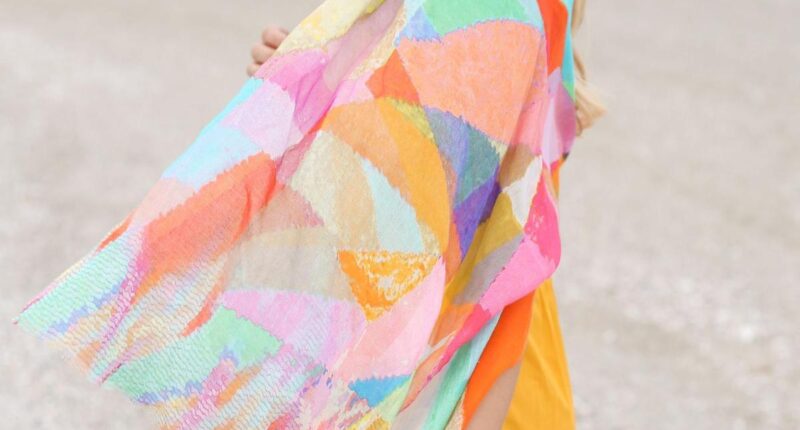The historical backdrop of cashmere is the historical backdrop of extravagance, magnificence, and style. Handwoven cashmere scarves have denoted a tip top faithfulness since the time the Middle Ages. Cashmere scarfs and vests were the essential garments for each English refined man.
What is the historical backdrop of cashmere? Cashmere doesn’t come from the eponymous Indian area, as its name would propose, despite the fact that weavers have been making astonishing, bright scarves here since the sixteenth century. Cashmere comes from the high Himalayan levels of China and Mongolia, where the cashmere goat lives. Its jacket (all the more explicitly its undercoat) is the essential material used to create cashmere. A six months in length winter with freezing that frequently arrives at temperatures of – 40 °C gives the goat’s jacket remarkable highlights that are valued in the whole world – non-abrasiveness and warmth.
Cashmere in European nations
Cashmere has been known in Europe since the hours of the Roman Empire. It has consistently been viewed as an uncommon material and has regularly been known as the “fiber for lords”. As per composed records, it was a most loved texture for rulers and sovereigns. One of them was the well known Napoleon, who talented his second spouse Joséphine pashminas – scarves made out of cashmere. She is likewise credited with finding a strategy for recognizing a legitimate and phony pashmina, with the genuine one being delicate to such an extent that you can fit it through a ring.
The new time of cashmere in Europe started in the nineteenth century, when pashminas from the Orient got trendy in Paris. Thereafter, French and English turning factories began handling crude cashmere imported from China. Cashmere has been turning into a mainstream thing in the design world. The 20th century saw increments and diminishes in its prominence, while the twenty-first century has seen a rising interest for top notch characteristic textures. You can track down the best cashmere items on the planet directly in our online store.
How is cashmere acquired?
Cashmere is acquired by brushing the undercoat of the cashmere goat. This incredibly versatile variety lives on the levels of mountains in China and Mongolia. The undercoat of the cashmere goats is delicate, thick, and consummately ensures against frosty temperatures, which frequently go beneath – 40 °C. These remarkable environment conditions are likewise the justification the extraordinary highlights of the cashmere filaments. Crude cashmere is gotten by brushing the undercoat in the spring and mid year months. It at that point goes through a long manual handling stage which creates the cashmere yarn and this is the thing that sweaters and scarves are made out of. Coincidentally, did you realize that fleece from three to five goats is utilized to make a standard-sized sweater?
How to pick cashmere dress?
Notwithstanding shading and size, give extraordinary consideration to the quantity of utilizes (layers) of cashmere yarn that the cashmere garments are made out of. It is this boundary that will advise you in what climate conditions you will feel the most open to wearing the piece of clothing. As a general guideline, more handles implies hotter attire. Two-handle cashmere sweaters are the most widely recognized, and they are likewise the greatest piece of our stock. You can wear these sweaters, vests, and sweatshirts throughout the entire year and feel incredibly good. Our thickest sweaters, which are made out of 10 to 12 utilizes, are likewise well known. They are intended to be worn in the coldest months of the year, and you can positively track down these in our item supply also.
How would you get a warm and delicate sweater or an exquisite pashmina from crude cashmere? Also, how precisely do you by any chance get cashmere?
It is just because of the cashmere goat living in the Himalayan levels that rich and agreeable cashmere scarves exist. The goats adjusted to living at high heights and in intense climate conditions. In their characteristic natural surroundings, temperatures in the drop tumble to around – 40 °C. They fostered a delicate and thick coat to secure them against these conditions. The assortment of cashmere fleece starts toward the start of spring, when the goats shed their rich and delicate undercoat. Generally, cashmere fleece is gathered by get-together tufts that can be found on rocks and brambles that the goats rub against to free themselves of the warm winter cover. Local people gather these valuable tufts and offer them to handling plants. Be that as it may, the main segment of the creation material comes from ranches where the fleece is gathered by brushing.
Just the undercoat is utilized to deliver cashmere, since the upper piece of the coat contains filaments that are excessively inflexible and not suitable for weaving or sewing apparel. It is additionally imperative to specify that just around 150 grams of cashmere are gathered from a solitary goat, which implies different goats are important to create a solitary piece of clothing. Worldwide, around 15,000 tons of cashmere are gathered every year, and it is an uncommon, esteemed, and premium texture.
The crude cashmere is washed and arranged (lesser-quality strands are rejected). A while later a yarn is woven out of them, which is then colored and dried. What follows is the main piece of the cycle – making the end result. This is done either by hand, or a few stages are finished by machines. The items we offer in our store are woven (wraps, pashminas) or sewed (sweaters) by hand. A few sweaters from the fundamental assortment are an exemption, as these are as yet produced using the best cashmere strands, however the creation is incompletely automatized.









